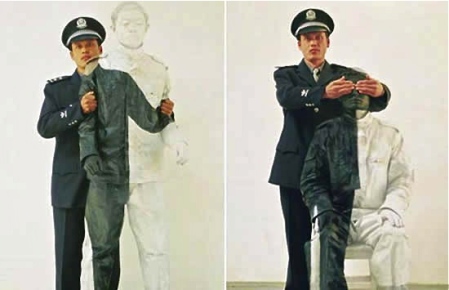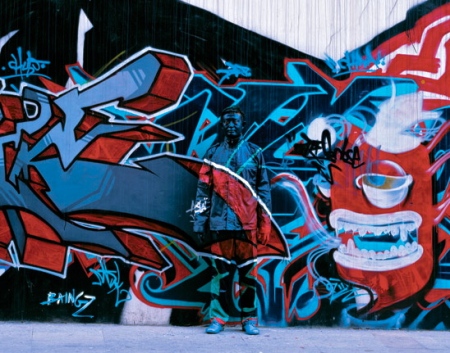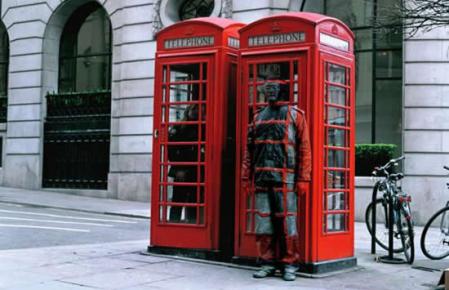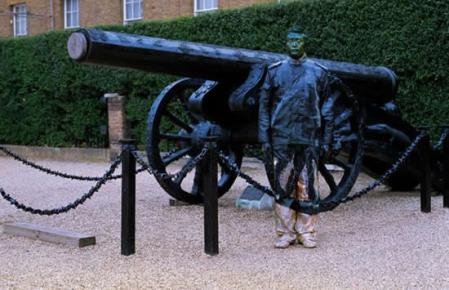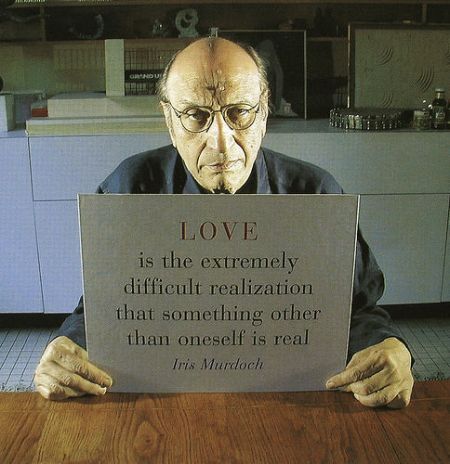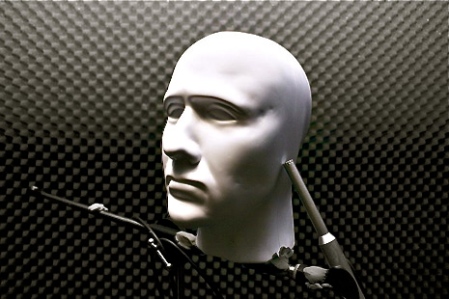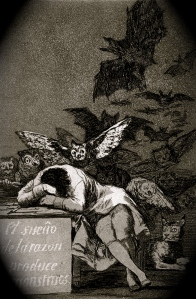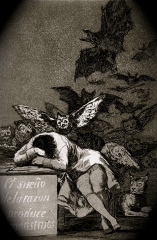Here is another article I had written in 1999 on 6th International Istanbul Biennial for a contemporary art class I took from Gulsun Karamustafa when I was a senior in Bosphorus University. We were supposed to visit the Biennial and choose 5 artists and write about their works. When I read it now, it seems quite a pathetic article with a poor command of English but considering that it was a ‘first’ for an economics student that time, and it was highly graded, I guess it was ok.
It seems that this article was aimed to be an early introduction for our curatorial choices as well. To choose five artists among 56, one needs to find a link, a binding concept between them. I remember putting ‘content’ above the ‘technique’ while choosing the artists and getting an A for the consistent selection of the works. My choices were Elina Bruderus who showed photographs of herself shortly after a divorce; Pedro Alvarez, a Cuban artist who dealt with discrimination between rich white and poor black citizens; Oliver Musovik, a Macedonian artist, who exhibited a project concerned with the continual and persistent interest in the ordinary personal lives and destinies of people in his neighborhood; and Kara Walker who used black and white wall sillouettes to explore some historical implications of slavery.
I also recall our everlasting discussions with Ms Karamustafa on high and low art in our lectures. In that sense, nothing much seems to be changed within a decade, since we still make the same discussions in lectures these days. What seems to be changed is the technology used to create the artworks that still have relatively similar contents (since every question has been asked and every subject has been visited). Hence the variety of techniques used to stimulate emotions have passed far beyond the imaginable. Therefore, after a decade, if we are given a similar task, will I be choosing the same type of works where ‘content makes more sense than shape’ is a question mark. I still value content much more than the shape, however in a world of derivative works of art (contentwise), creative use of technology gains more importance and keeps the art scene alive..
.
THE PASSION AND THE WAVE
by Ebru Surek, 1999

The Istanbul Foundation for Culture and Arts has been organizing art events since 1973. The last ‘Istanbul Biennial’ of the milllenium gathered 56 artists from 32 different countries. The selection was made by the curator Paolo Colombo because of the artists’ common features. After visiting the biennial, one can easily understand the curator’s view. All the artists in the biennial were reflecting the plurality of art and producing abovenations, emotional and independent masterpieces. Because in the world of 90’s globalization gains importance day by day. In this world, as Colombo suggests, a motive is extending in which the views and thoughts of people are becoming personal and more subjective. In the tangency point of the history and the geography, the curator wanted to catch this motive.
The name of the biennial is chosen as ‘The Passion and the Wave’, referring to Antonis Diamantidhis, one of the great voices of Istanbul and Athens. He sang under the stage name ‘Dalgas’ which means ‘wave’ in Turkish and ‘passion’ in Greek. The title of the biennial is an homage to this city, through the name of one of its greatest voices. Diamantidhis symbolizes an approach to the nonelitist,ordinary people of that time. What impresses the curator was his personal and poetic expression rather than the great, theoretic masterpieces. The artists that the curator invited also reflected that point of view. He invited all types of artwork: from painting to collage, photography to video works… The important thing was to express a feeling with the help of the surrounding. Content made more sense than shape.
The exhibition places were Dolmabahçe Cultural Center, Hagia Eireni Museum and Yerebatan Cistern. He chose these places because they born from underground of the city and reach to the sea. The artists(from the most subjective to the most expressionist), told us personal stories, they examined modernism and created an ‘Istanbul’ that we did not see before.
In this paper we are going to examine the works of five artists; Michael Raedecker, Elina Brotherus, Pedro Alvarez, Kara Walker and Oliver Musovik; and try to relate them to the curator’s purpose.
.
MICHAEL RAEDECKER :
 ‘Lots of details can be given but it is still possible to make the painting ‘empty’ says M. Raedecker, a famous Dutch artist. All he wants is to create anonymous images that everyone can add his own story. He used different art cathegories in his works. He combined craft and painting. In ‘Hallow Hill’ he gives an impression that you are in a well and seeing the world upside down. In ‘The Outskirts’ this time you got the impression of looking down the world from the sky. There are clouds and trees that were cut. In ‘Cue’ you are looking to the nature behind a theater curtain. The tree is made of wool. When looking to his works, you get a feeling that everything may be different than it looks. You go through different emotions. M. Raedecker paints approximate scenes which might have been seen, though never visited, from TV or a magazine. Both impersonal and familiar. He also crossed the borderline between ‘high’ and ‘low’ art. The scenes are individual and subjects are trivial but on the other hand it is high art since the materials are valuable and an emphasis on effort is given. The works also can not be copied.
‘Lots of details can be given but it is still possible to make the painting ‘empty’ says M. Raedecker, a famous Dutch artist. All he wants is to create anonymous images that everyone can add his own story. He used different art cathegories in his works. He combined craft and painting. In ‘Hallow Hill’ he gives an impression that you are in a well and seeing the world upside down. In ‘The Outskirts’ this time you got the impression of looking down the world from the sky. There are clouds and trees that were cut. In ‘Cue’ you are looking to the nature behind a theater curtain. The tree is made of wool. When looking to his works, you get a feeling that everything may be different than it looks. You go through different emotions. M. Raedecker paints approximate scenes which might have been seen, though never visited, from TV or a magazine. Both impersonal and familiar. He also crossed the borderline between ‘high’ and ‘low’ art. The scenes are individual and subjects are trivial but on the other hand it is high art since the materials are valuable and an emphasis on effort is given. The works also can not be copied.
.
ELINA BROTHERUS:
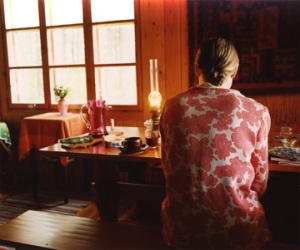 She uses photograps as a medium to communicate. She takes her own photos and tries to tell us her own story. She has just broken up with her husband and her sad look touches people in ‘This is the first day of the rest of my life’. She is not an outsider, sometimes she is inside the frame herself, sometimes she frames something else for us. A red umbrella at the fireworks. Some concrete buildings, lights. People turn their backs to the camera. In ‘Landscapes and Escapes 1’ she is away from people and near to the nature. Life is her film. She uses long exposures, living through the moments when patterns of life and light coincide. The pictures are the underlying reason for what they depict. They hold a mirror to the present. She uses images that we can easily read like a visual text.
She uses photograps as a medium to communicate. She takes her own photos and tries to tell us her own story. She has just broken up with her husband and her sad look touches people in ‘This is the first day of the rest of my life’. She is not an outsider, sometimes she is inside the frame herself, sometimes she frames something else for us. A red umbrella at the fireworks. Some concrete buildings, lights. People turn their backs to the camera. In ‘Landscapes and Escapes 1’ she is away from people and near to the nature. Life is her film. She uses long exposures, living through the moments when patterns of life and light coincide. The pictures are the underlying reason for what they depict. They hold a mirror to the present. She uses images that we can easily read like a visual text.
.
PEDRO ALVAREZ:
‘The Story of Cuban Art Has Been Told’ is an ironic name to criticize the modish attention paid to Cuban art all over the world. For Alvarez, there are two distinct channels of appropriation: art history and popular culture. First he has torn out images from the pages of expensive cathologues to provide the collage background for the work, then he has superimposed images taken from 19th Century cigar boxes. He suggests that ‘I am playing a game between ‘High’ and ‘Low’ art. By using Picasso, Bleckner, Monet as a background of the paintings he not only ridicules them as masters of ‘high’ art but also underlines the way their presence legitimizes the Cuban artists’ entry into the contemporary art world. He chose a critical, important subject (discrimination between rich white and poor black) but the title refers only to Cuban art so in a way it is a trivial subject. Copies of boxes can be made but he painted them and made it harder to copy. He uses cathegories of high and low art. He also criticizes the consumerism of art culture by using collage.
.
KARA WALKER:
‘Silhoutte’ is a sharp way of summarizing my various interests’ says K.Walker. Silhouette was historically existed as an art related to common and everyday life. Her works tell us about black slaves. She uses cut out of black paper on a white wall. They are criticizing slavery and racism, especially Klu Klax Klan. White people have big sharp teeth. There is a big eagle and it is beating another one, representing USA trying to colonize another country. A black man who escaped from a gallows is walking with his son. Behind them there is a lovely girl looking at them with a mask of Klu Klux Klan in her hand. A white man is running to dig a grave with a shovel in his hand.


She used a universal subject with a lot of work, her works can be cathegorized as high art. On the otherhand valuable materials are not used and her works can be reproduced, which reminds us low art. She expresses her personal views. Being an african american, she could probably have witnessed some negative events in her life. She used some images to tell us her point like eagle as the US. She is being criticised by most of the Americans, but it can not be denied that her works hold up a mirror to the present.
.
OLIVER MUSOVIK:
His projects appear so specific within the context of the Macedonian art scene because he has a continual and persistent interest in the ordinary personal lives and destinies of the people in his neighbourhood. Most of the artists from his generation are still occupied with the formal problems related to matter, shape and color but he has already translated his investigations into ‘real life’. He usually uses ordinary people in his work like the unemployed, students, pensioners etc., who are taking the leading roles for the first time in their lives.
In one of his works named ‘Neighbours’, he took photos of 20 flats of the apartment he is living. These photos are reflecting the lives of people living inside with all of the details. There are also personal stories written under each of them. They are so realistic that in the biennial, some people thought that they were the photos of earthquake and they said they were very pleased to see that a foreign photographer paid attention to that subject.
His works also crossed the borderline between high and low art. The scenes are very individual and the works can be reproducable but the effort is worth mentioning. His purpose is to stimulate emotion. He combined photographs and some writings in his works.
.
CONCLUSION:
Almost every art work in the biennial crossed a borderline between high and low art. The purpose was not just art, but to stimulate emotion. What the Biennial wanted to achieve was to feed the belief on intimacy and reality. What we live is not important, it can be earthquake, depression, love, racism or trouble. Whatever it is, the important thing is can it be expressed by any means, by pictures, paintings, crafts or all together.
.
REFERENCES:
-
6. ULUSLARARASI İSTANBUL BİENALİ, BİENAL, İstanbul Kültür ve Sanat Vakfı, 1999
-
GÖSTERİ, Sanat Edebiyat Dergisi, Eylül-Ekim 1999, Sayı 213
-
6.Uluslararası İstanbul Bienali, Sönmez Ayşegül, Milliyet Sanat Dergisi, Sayı 464, sayfa 4-11
-
6. Uluslararası İstanbul Bienali, Sanat mı değil mi, Korap Elif, Milliyet Sanat Dergisi, Sayı 465, sayfa 26-28
-
6. Uluslararası İstanbul Bienali’nin Düşündürdükleri, Sönmez Ayşegül, Milliyet Sanat Dergisi, Sayı 466, sayfa 32-34
-
Resmi Görüş, Güncel Sanat Seçkisi 1,
